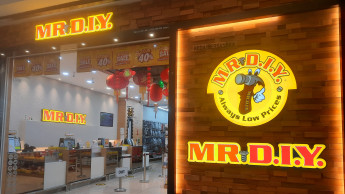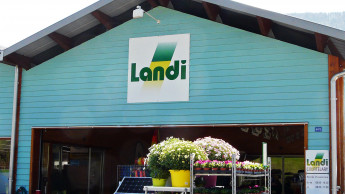Trading conditions continue to be difficult for DIY retailers in Britain. A variety of other factors have combined to worsen the already existing fact of market saturation
Secondly, unusually cold weather early in the year, followed by an exceptionally hot summer and the World Cup, have also had an overall effect on sales, although barbecues and garden furniture have benefited from the situation.
Thirdly, and most importantly, a lack of confidence, concern about consumer debt and a relatively weak housing market compared to previous years have put pressure on retailers. A number of the major retailers have reported declines in like-for-like sales during the year.
However, many commentators regard these current problems as temporary in nature. The DIY market will spring back and the long-term prognosis is better that the current conditions would indicate. This is because of the high level of home ownership in Britain and the underlying strength of the economy into the foreseeable future. It is also thought likely that the falls which have been experienced in the housing market for the past year are only a passing phase and the current recovery in this area will be maintained.
As ever with a dynamic sector like the DIY market, the retailers themselves have been working hard to fight off the new competition and encourage the consumers back into their stores.
Probably the biggest news of the last year has been the unveiling by Kingfisher, parent of B&Q, of its Trade Depot concept. This is a separate operation which, together with Screwfix, forms Kingfisher's trade division. The concept is similar to the French operation Brico Dépôt, also owned by Kingfisher. Trade Depot currently comprises two outlets, and is expected to grow slowly in the coming months. The focus at Trade Depot is on semi-professional tradesmen and small trade businesses that make up a large part of the building sector.
B&Q has increased the proportion of its Warehouse stores to 116 in the first six months of 2006/07 and the number of Mini-Warehouses to 102. Although it is the market leader, B&Q has not been able to escape the pressure on both sales and profits which have affected all retailers. Figures for the first half of 2006/07 show a like-for-like sales decline of 5.5 per cent and a retail profits decline of 43 per cent.
Second-placed retailer Homebase with just over 300 stores is now part of the Home Retail Group of GUS plc, along with the mail order retailer Argos. The Home Retail Group now positions itself as the UK's leading multi-brand, multi-channel retailer. During the year Homebase has continued to focus on installing mezzanine floors in its stores to maximise their selling space.
Focus DIY in third place has 251 stores. It has been undergoing a process of consolidation since the 2005 sale of Wickes, which used to be part of the group. Despite rumours early in the year of financial difficulties at Focus, the company is continuing with its development programme, which includes new stores and an expanded range of own brand products.
The new owners of Wickes, the builders' merchant chain Travis Perkins, have been seeking to develop the traditional strengths of the Wickes brand: key ranges for builders and enthusiastic DIYers stocked in depth and at the right price. Like other retailers, Wickes has also come under financial pressure, but the company says that “its reluctance to get involved in a price war with other retailers during 2006 has enabled it to escape the worst”. Since its acquisition by Travis Perkins, the company has, as expected, benefited from cost savings resulting from the synergies between the two businesses.

 Menü
Menü
















